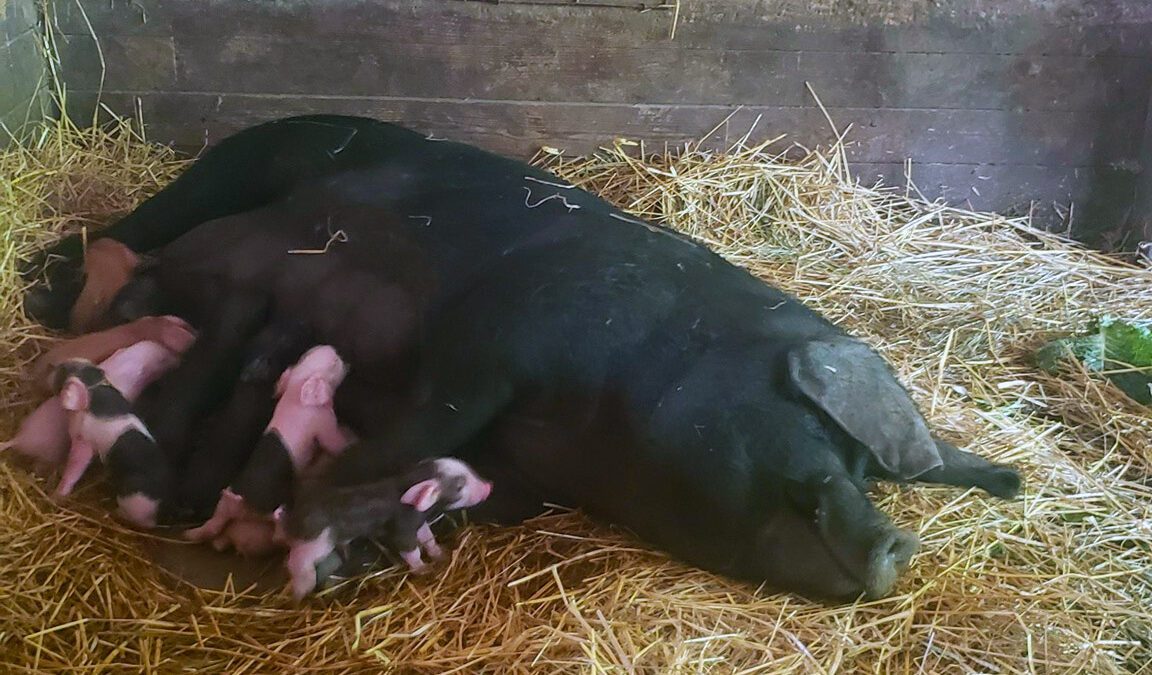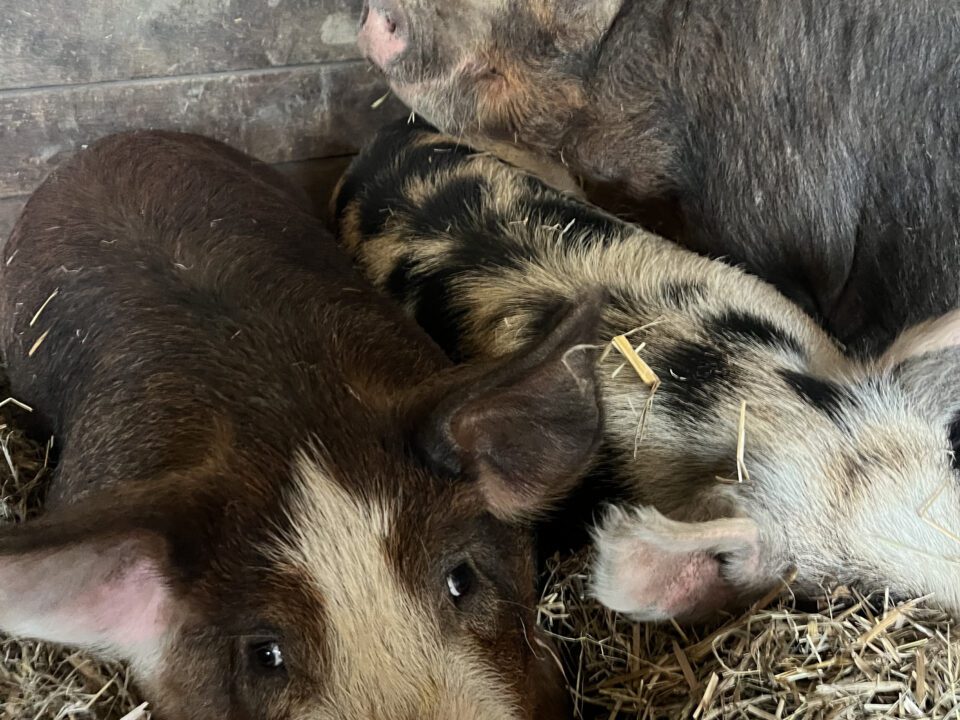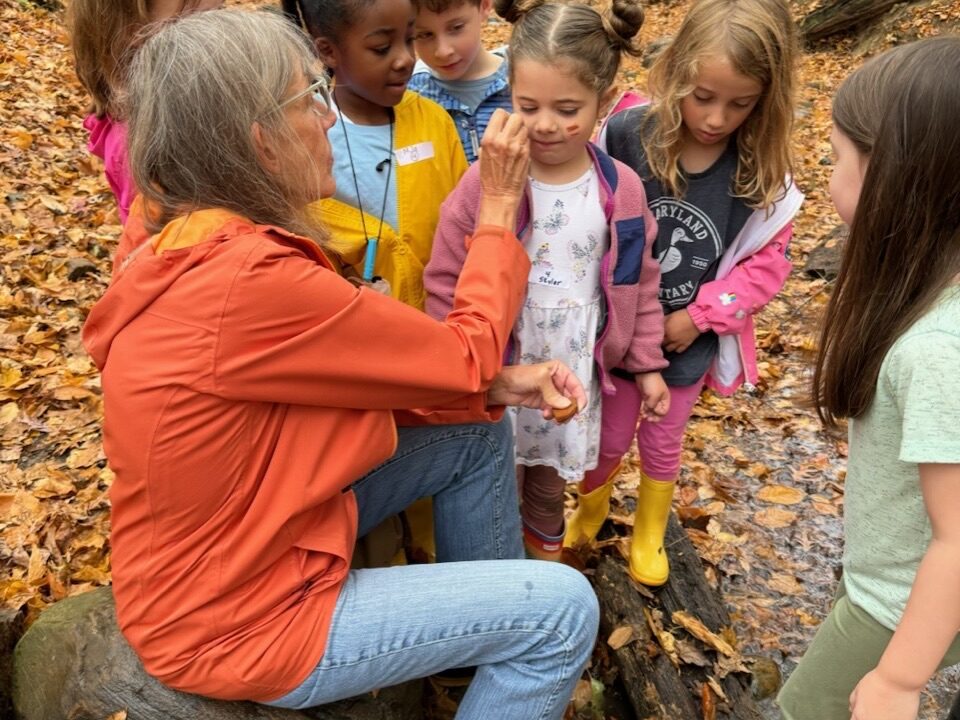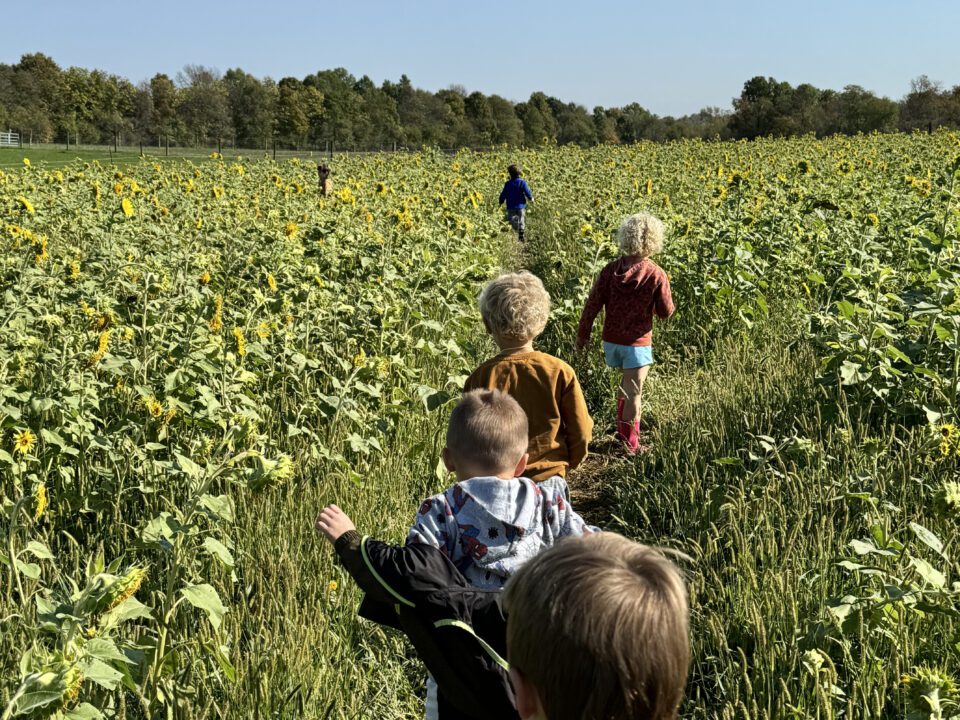Trail Blazers Cheer Brownie Queen
August 7, 2010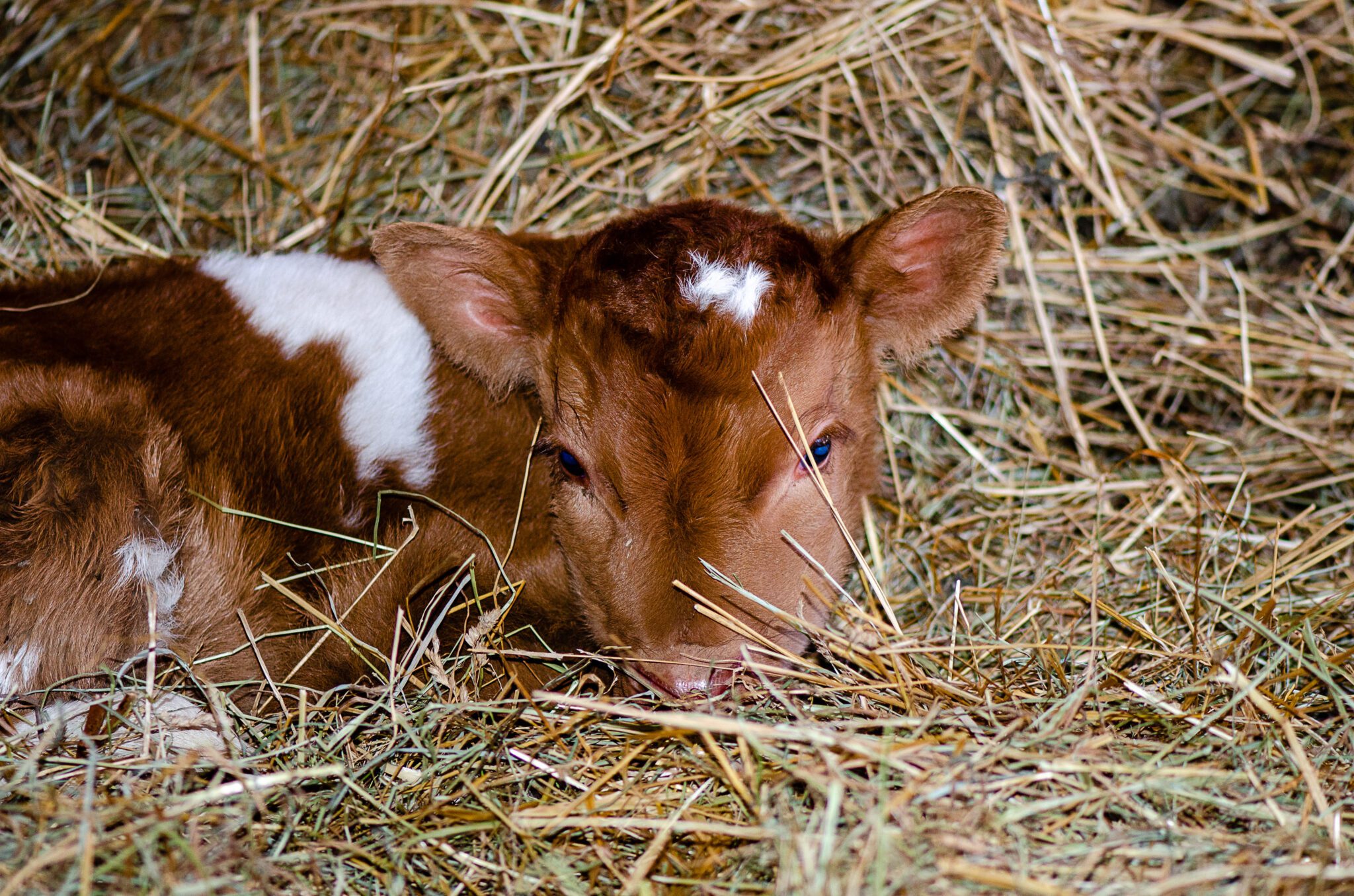
New Born Heifer Welcome Addition to Milking Herd”
October 2, 2010Published in The Delaware Gazette: September 11, 2010
It’s a lot quieter at Stratford Ecological Center on Liberty Road now that Farm Camps are over. The camps were even more popular this year. It wasn’t unusual to see thirty youngsters, gathered in groups on the front lawn, planning endless activities. What a great opportunity to be out in the fresh air doing morning farm chores, tending the gardens, picking berries, or exploring the woods and fields.
When the campers needed to cool down, the air‐conditioned kitchen provided a respite and a chance to make home‐made breads from freshly ground wheat and to preserve the produce from the gardens. Now all that remains is a pile of lost and found in the foyer as we look forward to the new ideas for next year’s camps.
Whilst walking through the woods to discover the new Sunship Earth trails, the sounds of dropping acorns, buckeyes, hickory and walnuts was all too evident, signaling it’s time to make preparations for winter. Early September is a good month to be out in the woods. The path is dry, the ground vegetation has thinned, and you can see further to spot the chattering birds. Yet the tree canopy remains thick, allowing only filtered sunlight and the woods remain deliciously cool. The wide stream holds puddles of water as it winds through the trees. The lack of flow comes as a surprise after the fullness of springtime.
The trail emerges beside the smartly painted sugar shack and leads into the corn field. The late‐planted corn is doing splendidly, with fat twin ears on most stalks and in some cases, the rare phenomenon of a third ear. The anticipated yield will make up for the loss in production from the empty rows, where the drill clogged, so we may not need to purchase any corn, as was our earlier intention.
The hay fields and prairie are buzzing with insects and butterflies. A third cutting of hay is a certainty before the season ends. The perennial White Clover has flourished in the moisture and shade of Field 1, bordering the woods. White Clover tolerates such conditions whereas Red Clover would decline. It also tolerates more frequent grazing than Red, but it doesn’t produce as good a quality of hay. Both clovers are perfect for close grazing.
Goats and sheep are close grazers and it is an art to learn which grasses and legumes to plant, and when to rotate the animals. Worm parasites are a challenge to control with all grazing animals. Once an animal is infested with parasites, their eggs drop to the ground in the animal’s manure, develop, and are ingested when the animal eats the grass. We wormed our goats and took them off the north pasture for twenty one days to break the parasite cycle. They were put in the south pasture and they have responded well to the fresh, worm‐free grazing.
The apple orchard is loaded with green, yellow and red apples. Thanks to the efforts of the hens and the resistant genes in the heritage varieties, the apples are worm free, with no inner brown spots. Few are free of a sooty skin covering, but farmer Jeff Dickinson declares it doesn’t affect the flavor or harm you. He’s eaten plenty so I will take his word for it! Bushels of apples have been picked and stored in the walk‐in cooler to make cider and apple butter at our upcoming Harvest Fair, the last Saturday in September.
The young Jersey calves were brought in from the lush grass in order to slow down the work of the rumen (the first stomach) and retain bacteria. Feed was moving through this stomach so quickly it was depleting the good bacteria. We jump started the bacteria by feeding dry hay for a week, and they are now back on pasture.
Sadly, Roja and Rosie are not in‐pig and not likely to become pregnant again. They are both very large and it is difficult for a boar to mate them. We had high hopes for two litters but time has run out and it is necessary to say thank you and goodbye. It will seem empty without them. We will process their meat into brats, sausages and ground pork. We plan to buy an in‐pig female early next year in time for her to farrow in the spring, when school groups tour the farm.
The year‐old hens are starting to molt, leaving feathers all over the yard and coop. It is a little early in their lives to be doing so, but they fit right into the pattern of hens molting in the late summer and early fall. Occasionally, a hen will molt twice a year. Molting lasts from two to four months and during that period egg production stops. The benefits are threefold. One, to renew its feathers with strong ones in case it has to fly and escape a predator, second, the thick feathers keep it warm during the winter, and third, to allow the hen a chance to build up nutrients for its own body instead of an egg.
Stratford welcomes volunteers to come help us pick the apples and pears. Tomatoes are getting closer to ripening in the fields and there will be plenty of opportunity for u‐pick. The annual family‐centered Harvest Fair is a celebration of Stratford and down‐home country fun. It takes place on Saturday, September 25, from 10.00 am. – 4.00 pm., $6/adult, $4 children 2‐12. Tickets can be purchased on the day. Please join us.


